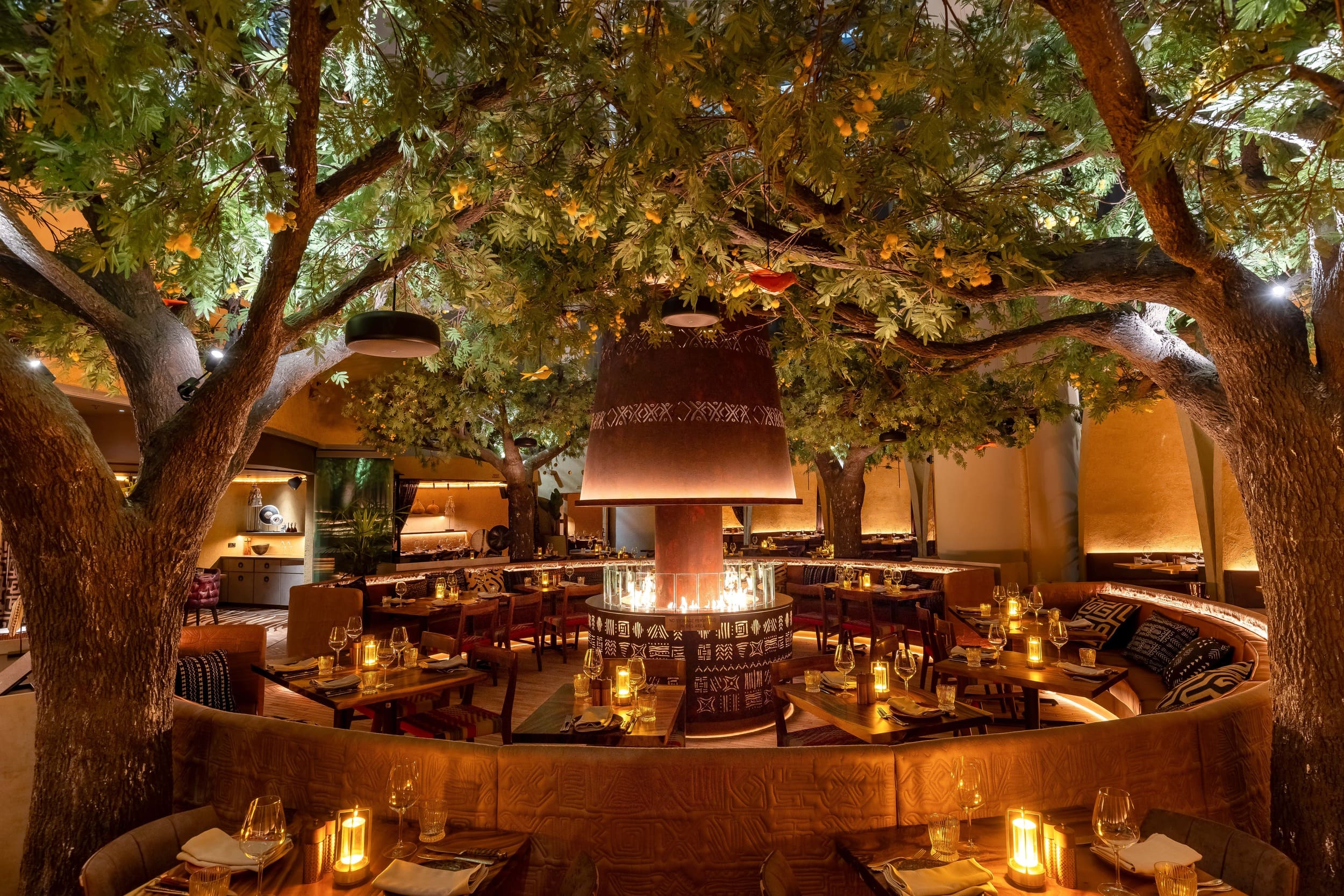Imagine a restaurant as you would a person. Just as captivating people, those with a magnetic “great personality,” naturally draw you in, a restaurant should offer more than just food—it should create an atmosphere and experience that beckons you to return.
The Meat & Wine Co. Safari by COOOP. embodies this principle, seamlessly blending warmth and connection with tradition and modernity.
Cultural inspiration and design elements
Inspired by the Tata Somba homesteads in the Atakora Mountains of Benin and Togo, the restaurant’s design draws from traditional African Boma dwellings. These spaces, centered around a communal fireplace, symbolize unity and cultural continuity. The Afro-centric design is further enriched by incorporating elements from various African cultures, including traditional art forms and strong communal values. The restaurant features earthy tones, natural textures, and African art to create a unique and immersive environment. Acacia trees, revered in African culture for their resilience and vitality, provide a canopy effect, masking the 23-meter high concrete soffit, while symbolically connecting the restaurant to the African savannah and its deep cultural roots.
Emotional and social engagement
The design goes beyond aesthetics to focus on human emotion and experience. Drawing from Ubuntu, a Southern African philosophy meaning “I am because we are,” the space emphasizes community, shared humanity, and interconnectedness. This philosophy is reflected in the restaurant’s layout, which fosters meaningful interactions and a sense of community among guests and staff. Influenced by Xhosa culture’s emphasis on harmony and respect, the design creates an environment that encourages social behaviour and nurtures connections.
Reimagined boma concept
One of the restaurant’s most distinctive features is its reimagined Boma concept. Inspired by African traditions, it is sympathetically integrated with modern Australian aesthetics. The Boma units orientation, influenced by the Zulu tradition of circular kraals, feature unique heated booth seating that faces the central fireplace and acacia trees. This design encourages interaction and shared experiences, balancing intimacy with community. Reflecting Zulu traditions of communal spaces, the setup creates an inviting atmosphere where guests feel comfortable connecting and lingering.
Symbolism and functionality of the fireplace
In many African cultures, the fireplace is more than a source of warmth; it is a sacred space for storytelling and passing down wisdom. For instance, in Ashanti culture, the hearth is central to sharing family stories and values. In the restaurant, the fireplace serves a similar role as the social and emotional anchor. It not only provides warmth but also acts as a gathering point where guests can share meals and engage in meaningful conversation, embodying the restaurant’s Afro-centric identity. This blend of tradition with modern hospitality creates a rich sensory experience.
Natural materials and immersive elements
The use of natural materials like straw and hay nods to traditional African craftsmanship, evoking a connection to the land. These materials, known for their insulating properties, create a grounded, sustainable aesthetic that complements the restaurant’s earthy tones and organic design. Enhancing the space are five custom-built acacia trees. With integrated lighting and speakers subtly playing African Safari sounds, these trees symbolise strength and endurance, bridging nature and intangible cultural heritage values. Their presence adds a natural, immersive quality, creating an atmosphere that is both welcoming and deeply rooted in African heritage.
Overall experience
This design exemplifies that hospitality is more than creating a visually appealing space; it’s about engaging emotions and senses to craft a memorable experience. The philosophy of “form follows feeling” guides every design decision, ensuring that the space resonates on a deeper level with guests. At The Meat & Wine Co. Safari., every visit becomes more than just a meal—it’s a journey through taste, culture, and design, where tradition meets modernity, and community thrives.

